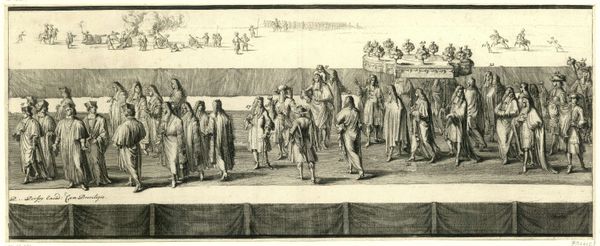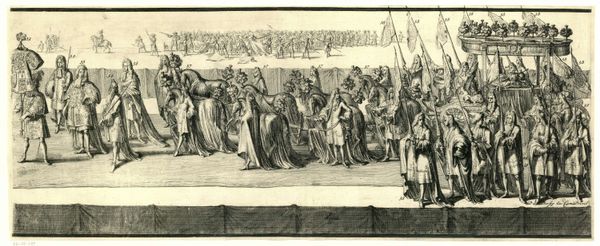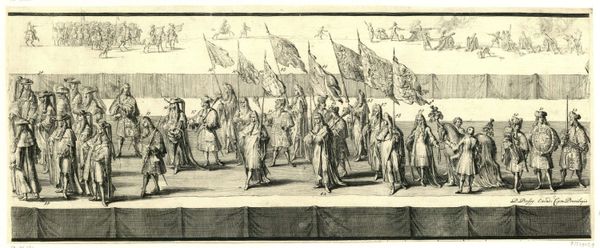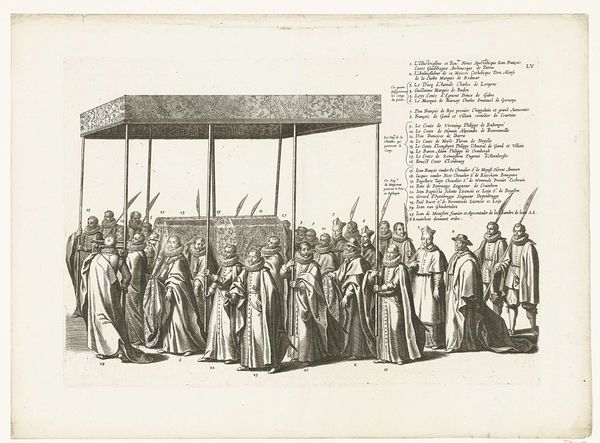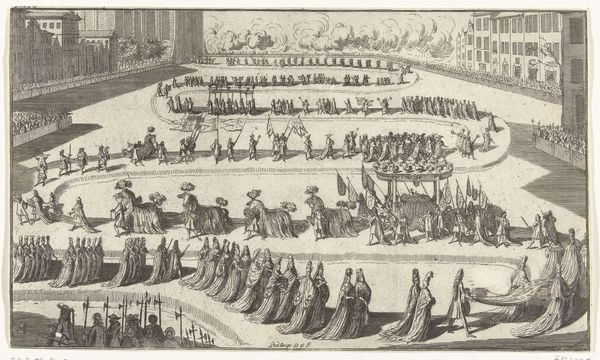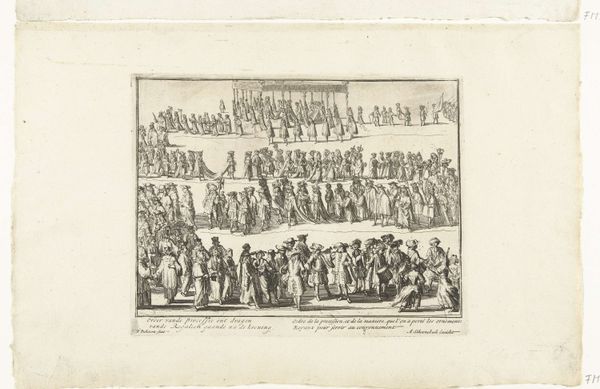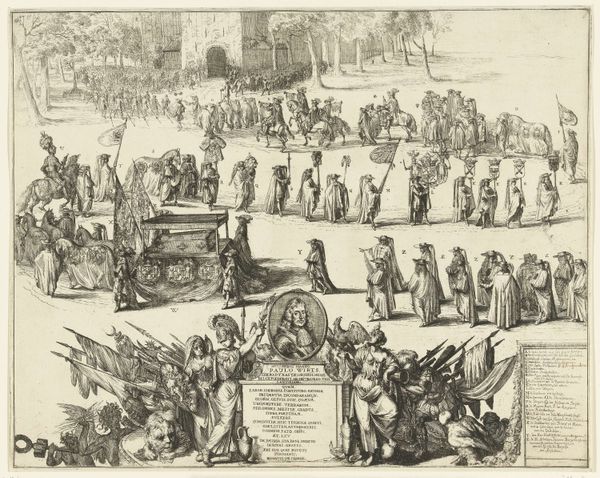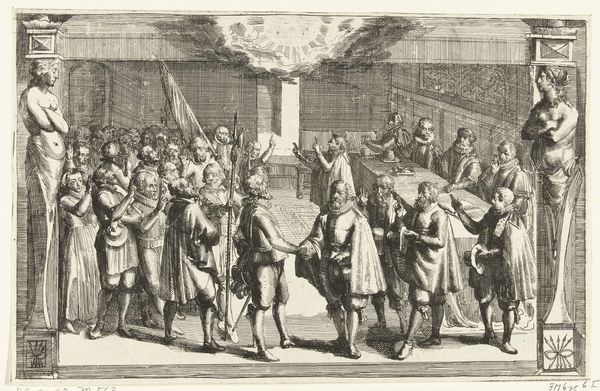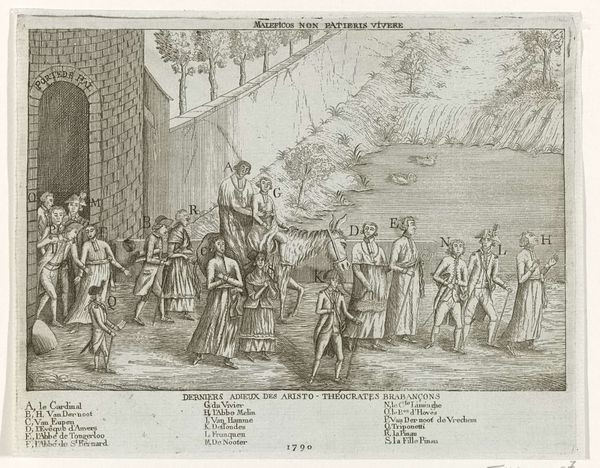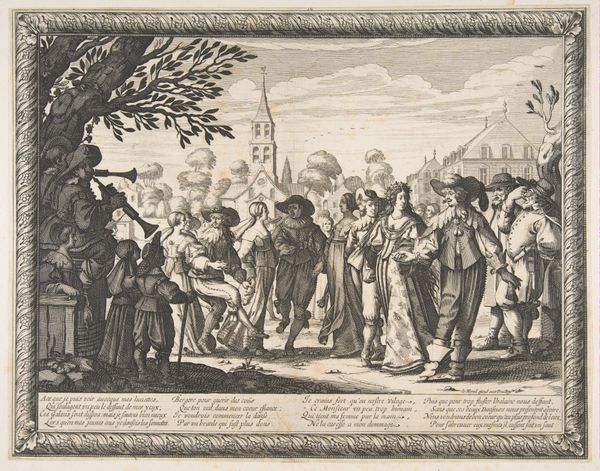
De lijkstatie van de koningin, eerste deel, eerste helft, 1695 1695
0:00
0:00
romeyndehooghe
Rijksmuseum
print, engraving
#
baroque
#
pen drawing
#
mechanical pen drawing
# print
#
pen illustration
#
pen sketch
#
old engraving style
#
figuration
#
personal sketchbook
#
wedding around the world
#
pen-ink sketch
#
line
#
pen work
#
history-painting
#
storyboard and sketchbook work
#
engraving
Dimensions: height 230 mm, width 587 mm
Copyright: Rijks Museum: Open Domain
This is the first half of a print made by Romeyn de Hooghe in 1695, called 'The Funeral Procession of the Queen'. The image is achieved through the process of etching, where the artist covers a metal plate with a wax-based ground, scratches an image into it, and then bathes the plate in acid. The acid bites into the exposed metal, leaving behind lines that hold ink. These lines appear as the image when printed. The etching process is significant here. Unlike painting, which can be infinitely reworked, etching demands a more decisive gesture. This print also speaks to the rise of print culture at this time, a mechanical means of disseminating images, tied to wider social issues of labor, politics, and consumption. There is a lot of work involved in the production of this print. By considering materials, making, and context we see the cultural significance of this artwork.
Comments
No comments
Be the first to comment and join the conversation on the ultimate creative platform.
